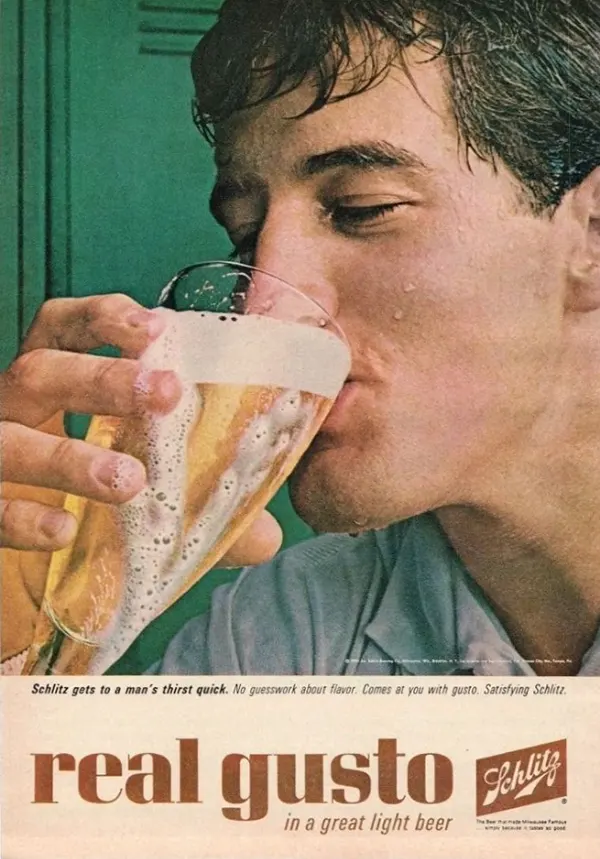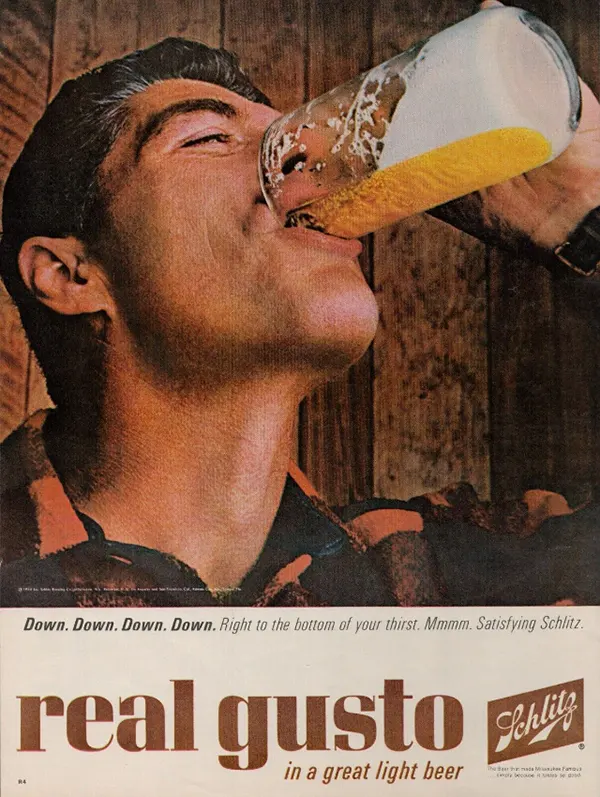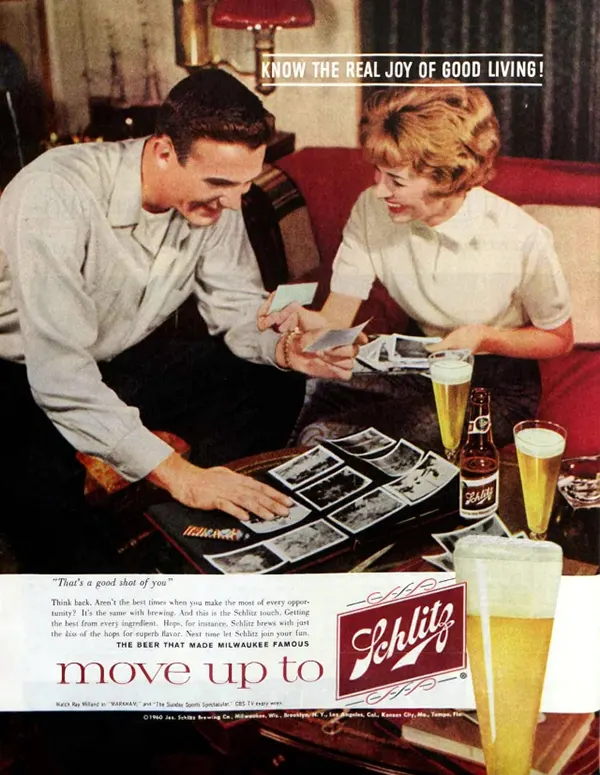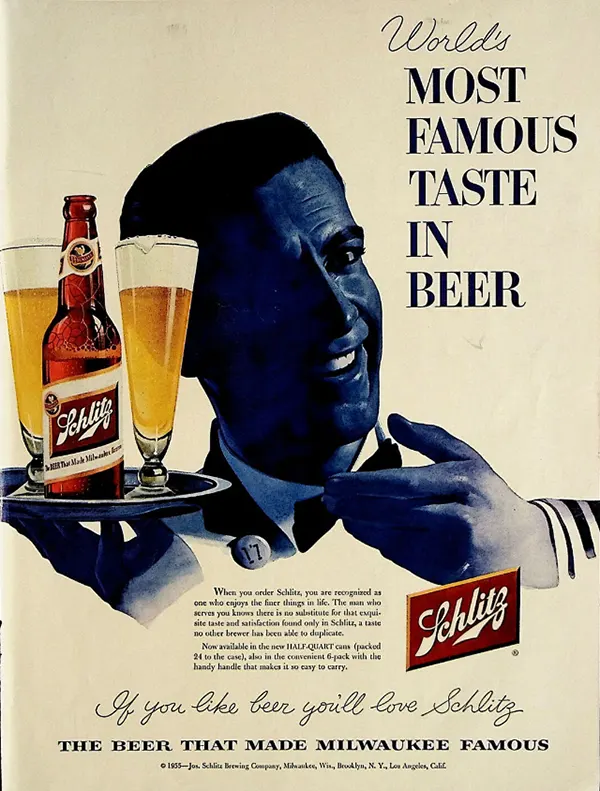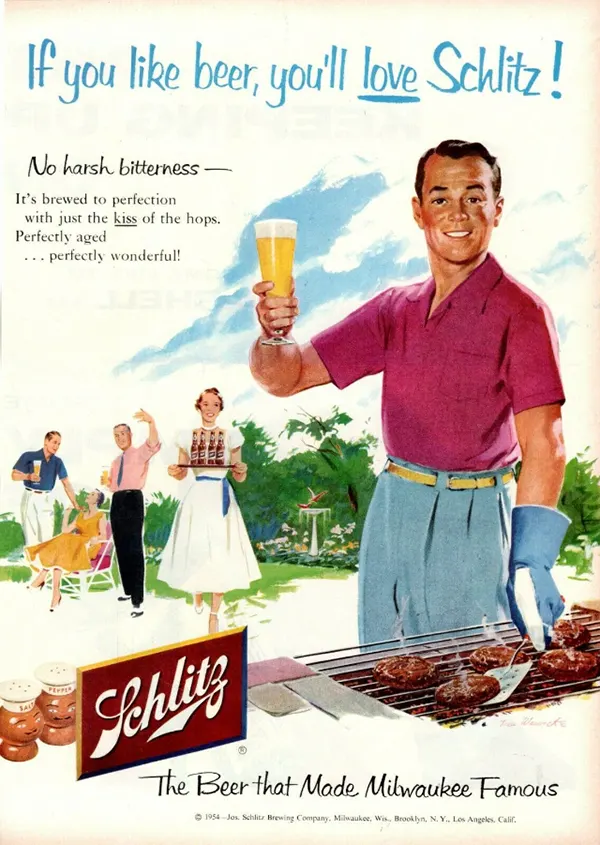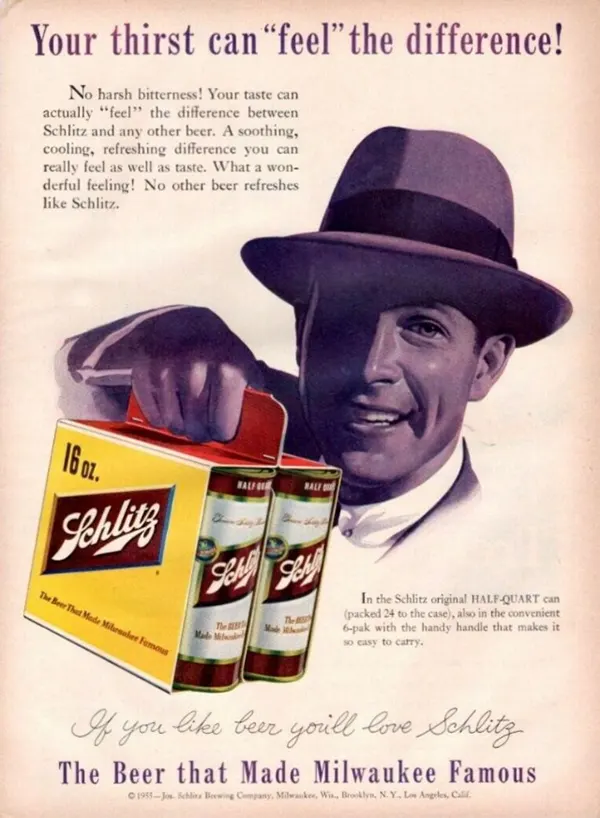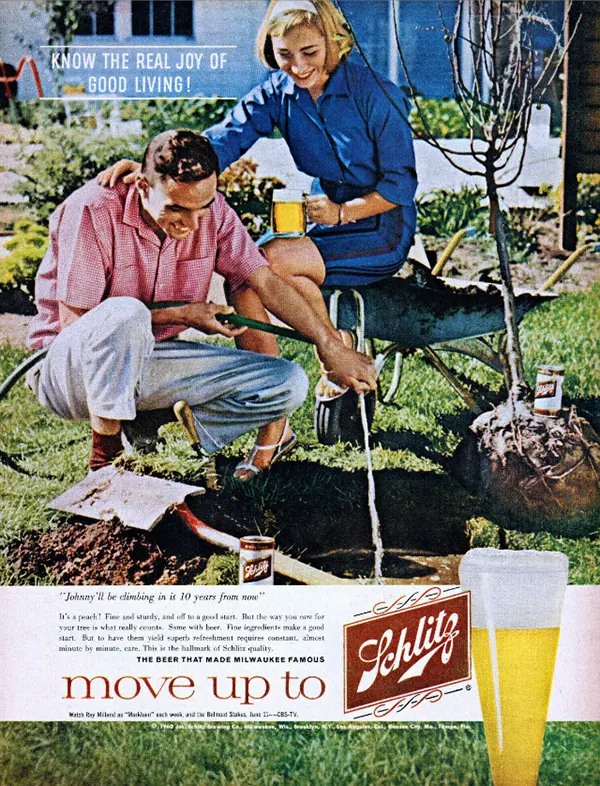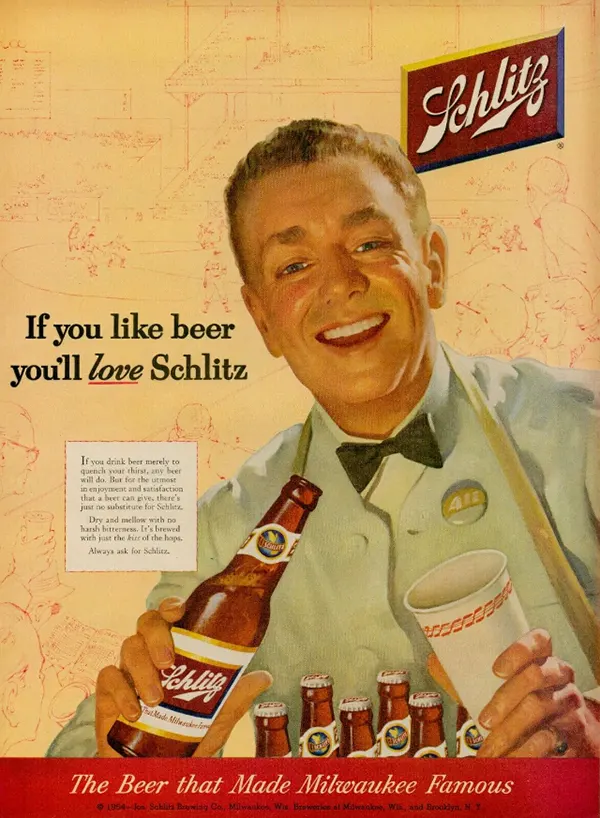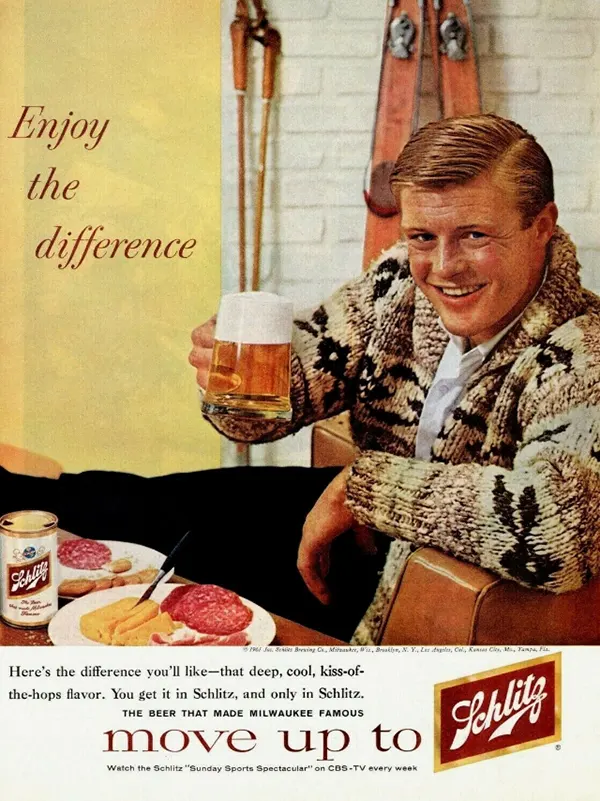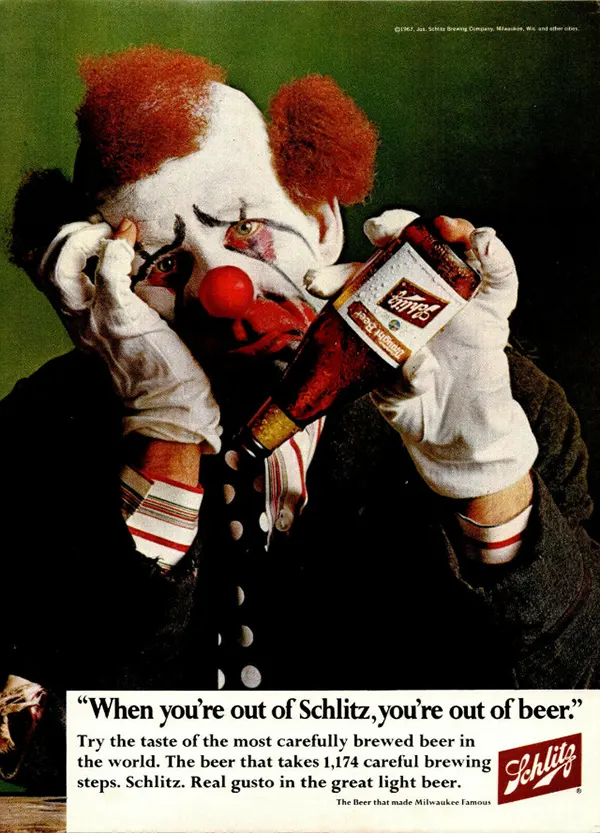Schlitz first became the largest beer producer in the US in 1902 and enjoyed that status at several points during the first half of the 20th century. In Milwaukee, Joseph Schlitz was hired as a bookkeeper in a tavern brewery owned by August Krug. In 1856, he took over management of the brewery following the death of Krug. In 1858, Schlitz married the widow, Anna Maria Krug, and then changed the name of the brewery to the Jos. Schlitz Brewing Co. in 1861, Krug’s 16-year-old nephew, August Uihlein, began employment at the brewery. The often circulated story of Schlitz’ proposed donation of thousands of barrels of beer to the Chicago population after the Great Chicago Fire of 1871 is simply a modern myth, pushed by later marketing campaigns. Schlitz’ national expansion was based on new distribution points in Chicago and elsewhere, and the consequent use of the railway. The company flourished through much of the 1900s, starting in 1902 when the production of one million barrels of beer surpassed Pabst’s claim as the largest brewery in the United States. Schlitz began pioneering numerous advances in the brewing industry, most notably the use of brown glass bottles beginning in 1912. Previously, beer was bottled in clear glass bottles, but this allowed sunlight to spoil the flavor of the beer. The entire industry quickly adopted the brown bottle, and the design is still used to this day. However, their success would meet the first of several major obstacles. In the early 1900s, the temperance movement was gaining traction, and production and consumption of alcohol was eventually outlawed entirely with the passage of Prohibition in the United States in 1920. During Prohibition, Schlitz faced difficulties trying to stay open and keep their workers employed. In 1919, with Prohibition imminent, Joseph E. Uihlein Sr. created a division of Schlitz that would produce milk chocolate, looking to make good use of Wisconsin’s large dairy industry. The chocolate was sold under the Eline brand. However, Eline Chocolate did not have much success, as the Hershey company was dominant in the highly competitive chocolate industry, and Eline candies were often rife with quality control problems. Despite pouring millions into the chocolate division and creating a hard candy and gumball line, the venture was a failure and was abandoned by 1928. This forced the company to change its name from Schlitz Brewing Company to the Schlitz Beverage Company and changed its “famous” slogan to “The drink that made Milwaukee famous.” Schlitz primarily focused on producing malt extract and non-alcoholic soft drinks called Schlitz Famo that they used to keep the brewing equipment operational, as the Uihleins correctly deduced that Prohibition would not be permanent. After Prohibition ended in late 1933, Schlitz again began producing beer and quickly became the world’s top-selling brewery in 1934. In 1953, Milwaukee brewery workers went on a 76-day strike. The strike greatly impacted Schlitz’s production, including all of Milwaukee’s other breweries, and allowed Anheuser-Busch to surpass Schlitz in the American beer market. The popularity of Schlitz’s namesake beer, along with the introduction of value-priced Old Milwaukee, allowed Schlitz to regain the number-one position. Schlitz and Anheuser-Busch continued to compete for the top brewery in America for years. Schlitz remained the number-two brewery in America as late as 1976. By 1967, the company’s president and chairman was Robert Uihlein, Jr. Faced with a desire to meet large volume demands while also cutting the cost of production, the brewing process for Schlitz’s flagship Schlitz beer was changed in the early 1970s. The primary changes involved using corn syrup to replace some of the malted barley, adding a silica gel to prevent the product from forming a haze, using high-temperature fermentation instead of the traditional method, and also substituted less-expensive extracts rather than traditional ingredients. Schlitz also experimented with continuous fermentation, even building a new brewery specifically designed to use the process in Baldwinsville, New York. The reformulated product resulted in a beer that not only lost much of the flavor and consistency of the traditional formula, but also spoiled more quickly, rapidly losing public appeal. In 1976, concern was growing that the Food and Drug Administration would require all ingredients to be labeled on their bottles and cans. To prevent having to disclose the artificial additive of the silica gel, Uihlein switched to an agent called “Chill-garde” which would be filtered out at the end of production, so would be considered nondisclosable. The agent reacted badly with a foam stabilizer that was used and Schlitz recalled 10 million bottles of beer. Schlitz was further hurt by the rise of high-volume light beers such as Miller Lite and Bud Light, a direction Schlitz did not aggressively pursue – although James Coburn appeared in commercials for the short-lived Schlitz Light in 1976. As part of its efforts to reverse the sales decline, Schlitz launched a disastrous 1977 television ad campaign created by Leo Burnett & Co. In each of the ads, an off-screen speaker tries to convince a Schlitz drinker to switch to a rival beer. The Schlitz drinker then talked about how they would never switch and jokingly threatened the person trying to persuade them away from their favorite beer. Despite the tone of the campaign intended to be comedic levity, audiences found the campaign somewhat menacing and the ad industry dubbed it “Drink Schlitz or I’ll kill you.” Schlitz, unwilling to endure more bad press, pulled the campaign after 10 weeks and fired Burnett. By the 1980s, Schlitz had rebounded somewhat, but it had now fallen from the second-most-popular brewery in the country to the fourth, as Miller and Pabst had overtaken it for the first time in decades. The final blow to the company was a crippling strike at the Milwaukee plant in 1981. About 700 production workers went on strike on June 1, 1981. The strike was triggered because there was no replacement contract when the union’s contract expired. The strike lasted for almost four months, and the company quickly abandoned all remaining hope that it could be saved, as all previous attempts were utter failures and the strikes had now crippled the company’s production line and finances. The Schlitz management team finally threw in the towel and began negotiating a deal to sell the company and cut their losses. As the Milwaukee plant was the oldest and least efficient of the Schlitz breweries, and unable to afford to keep operating it due to the strike, Schlitz closed the doors to the Milwaukee brewery, thus ending the strike and, ultimately, signaling the end for Schlitz being one of the most popular beer companies in America.
(Photo credit: Wikimedia Commons / Flickr / Pinterest). Notify me of new posts by email.
Δ Subscribe


